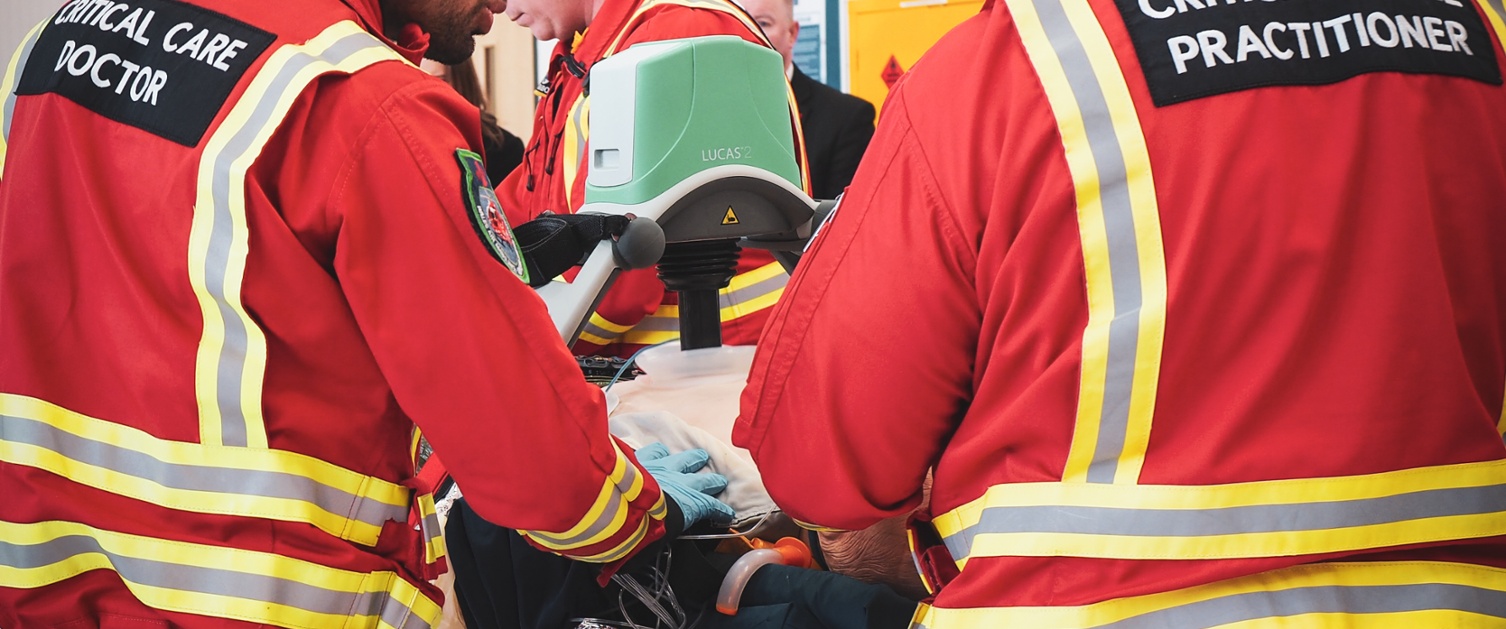Critical Care Interventions

EMRTS Clinical Capabilities Beyond JRCALC
This list is designed to give an overview of the clinical capabilities of EMRTS Cymru.
This is not exhaustive. The capabilities and indications may extend beyond the lists below.
If in doubt, please contact the Critical Care Hub.
Items marked with a * can be performed by a CCP, independent of a doctor.
|
Capability (in alphabetical order) |
Description |
| Adrenaline Infusion * | Post-cardiac arrest management of unstable, hypotensive patient. Resistant or Biphasic Anaphylaxis, severe sepsis/septic shock not responding to fluid challenge, profound bradycardia and patient hypotensive. |
| Amiodarone * | Broad complex tachycardia (pulsed VT). |
| Blood products transfusion * (dependant on individual CCP training) | Ability to give blood and blood products. Any patient with a rapid bleed. Trauma, obstetric, medical GI bleeding etc. |
| Calcium Chloride * | Treatment of hyperkalaemia and hypocalcaemia (known or suspected), suspected hyperkalaemia in cardiac arrest, overdose of calcium channel blocking drugs. |
| Cardioversion * | Tachy- arrhythmias (Pulsed-VT, SVT etc., where the patient is compromised (chest pain, syncope, hypotensive, breathless and so on). |
| Direct referral to specialist care * (a CCP can clarify with the Top Cover Consultant and convey to recommended specialist care) |
E.g. PPCI post-VF/VT arrests outside of current paramedic referral guidance, major trauma, paediatrics, burns and plastics. |
| Flumazenil* | Benzodiazepine toxicity. Iatrogenic reversal (not for overdosed patients). |
| Hypertonic Saline 5% * | Signs of actual or impending herniation (signs of coning) resulting from traumatic or non-traumatic brain injury. |
| Limb Amputation * | A surgical procedure to remove a limb. Indicated for rapid extrication of a critically ill patient when there are no other rapid options. Can also be used to extricate a patient with an unsalvageable limb. |
| Neonatal CPAP * | Support of the distressed neonate (particularly in premature labours). |
| Non-invasive ventilation * | (CPAP and BIPAP) respiratory failure patients (COPD, pneumonia, obese patients, pulmonary oedema/LVF etc.). |
| Paediatric intubation * | Intubation of all ages as required in an arrest/peri-arrest situation. |
| Paralysis and sedation * | Managing an already intubated patient (e.g. intubated during arrest) to facilitate safe and controlled transfer to appropriate facility. |
| Perimortem caesarean section | Performance of an emergency caesarean section. To improve the cardiovascular status of a pregnant patient who is in traumatic or medical cardiac arrest. |
| Point-of-care testing * | Blood gas and blood analysis at scene. INR testing, carbon monoxide testing. |
| Pre-hospital anaesthesia | The ability to anaesthesia a patient in order to intubate and ventilate. Airway compromise, respiratory failure, neurological compromise like unconsciousness. |
| Procedural sedation * | Use of extended pharmacology (Ketamine and Midazolam) in order to facilitate painful procedures. Reduction of fractures with compromised distal vascular supply. |
| Surgical airway * | Formal airway using a scalpel. |
| Thoracostomy * | Decompression of the chest using a scalpel and finger thoracostomy method. Relieves a tension pneumothorax. |
| Transcutaneous pacing * | Brady-arrhythmias, heart blocks etc. Where the patient is compromised and not responding to other methods (oxygenation, atropine etc.). |
| Ultrasound * (dependant on individual CCP training) |
Confirmation of cardiac movement in PEA, rule in internal haemorrhage/pneumothorax, aneurysm, cardiac tamponade etc. |